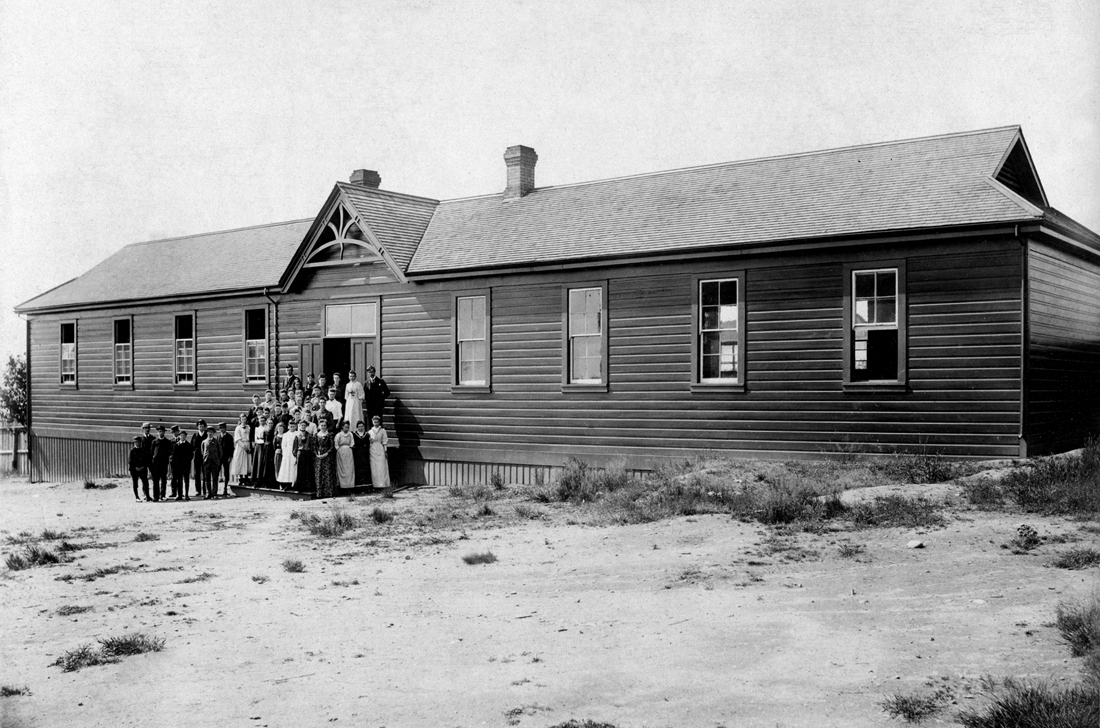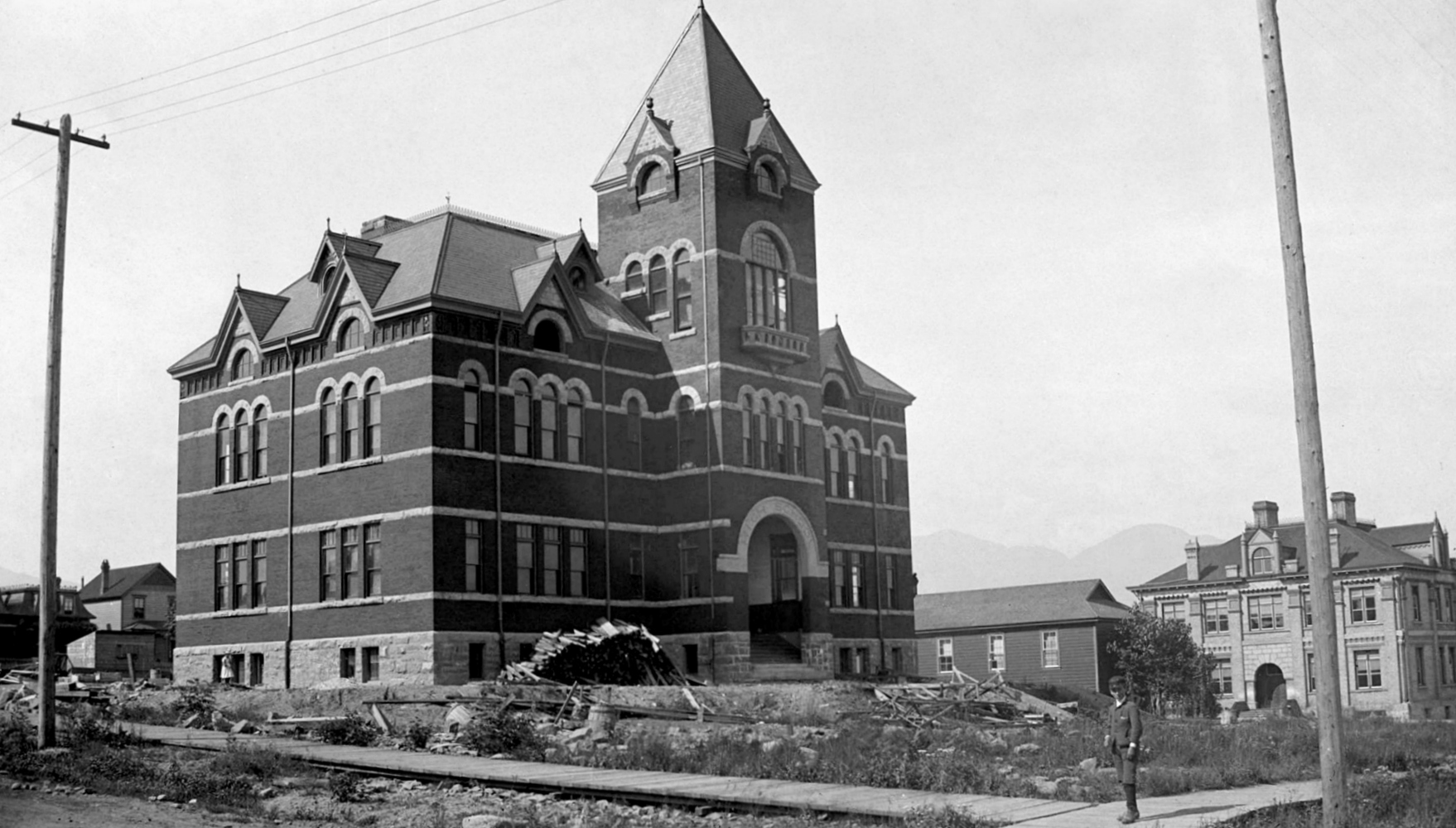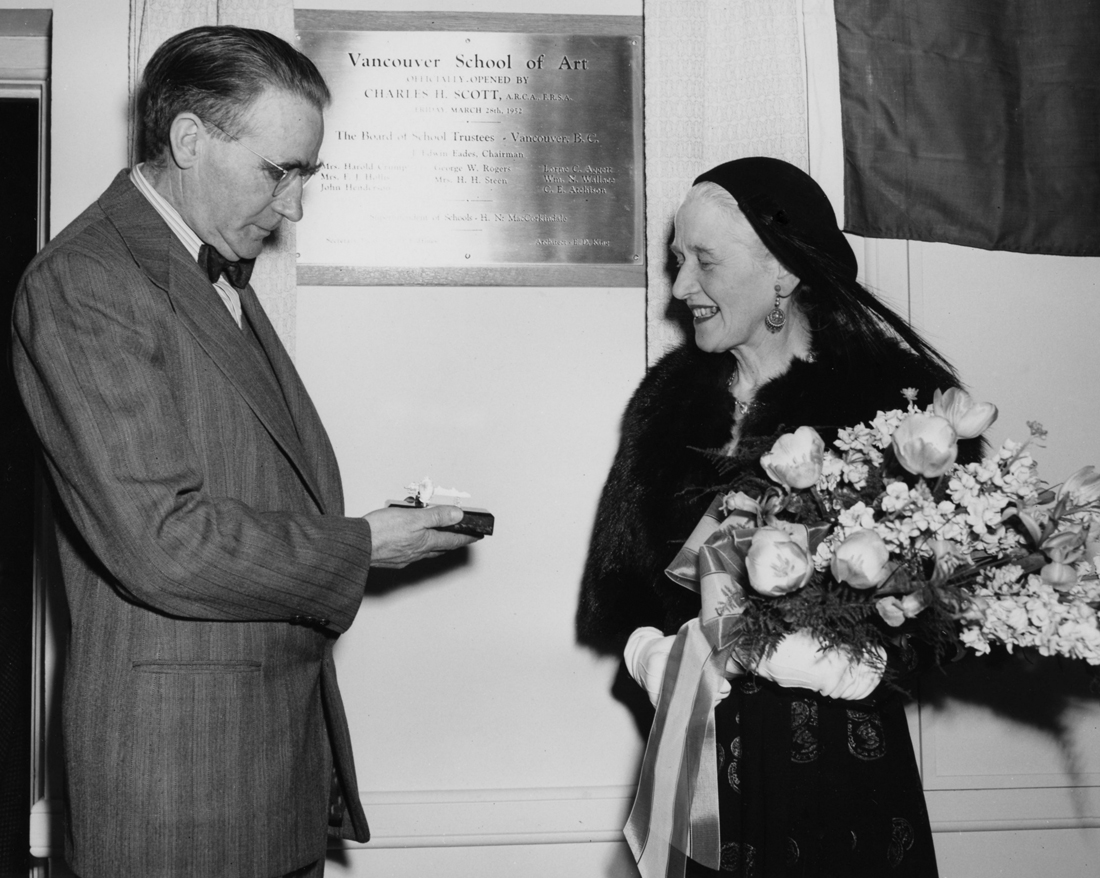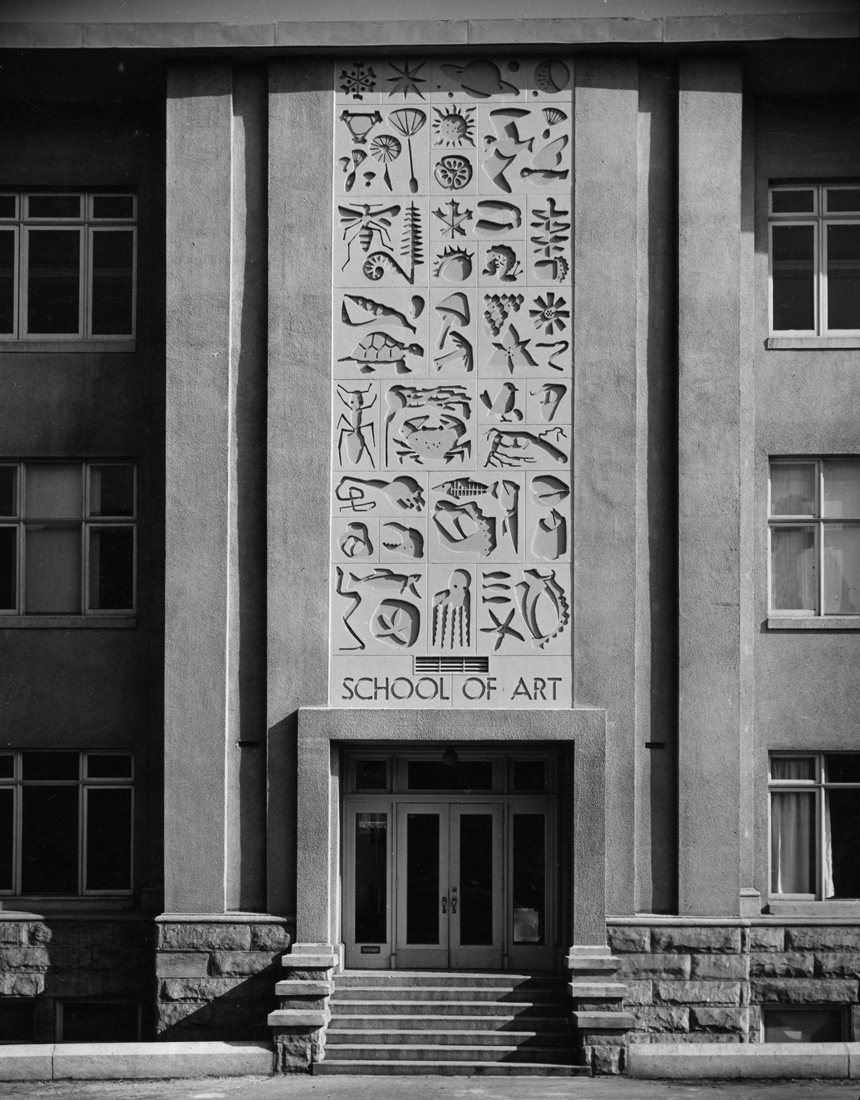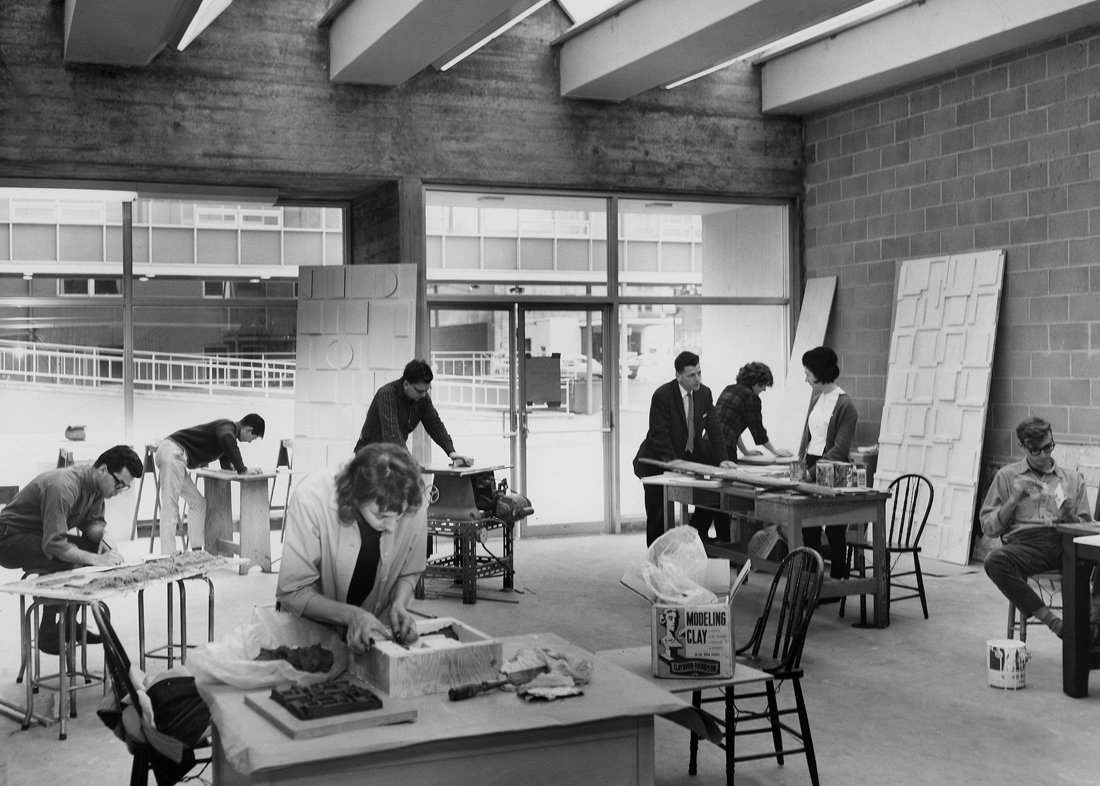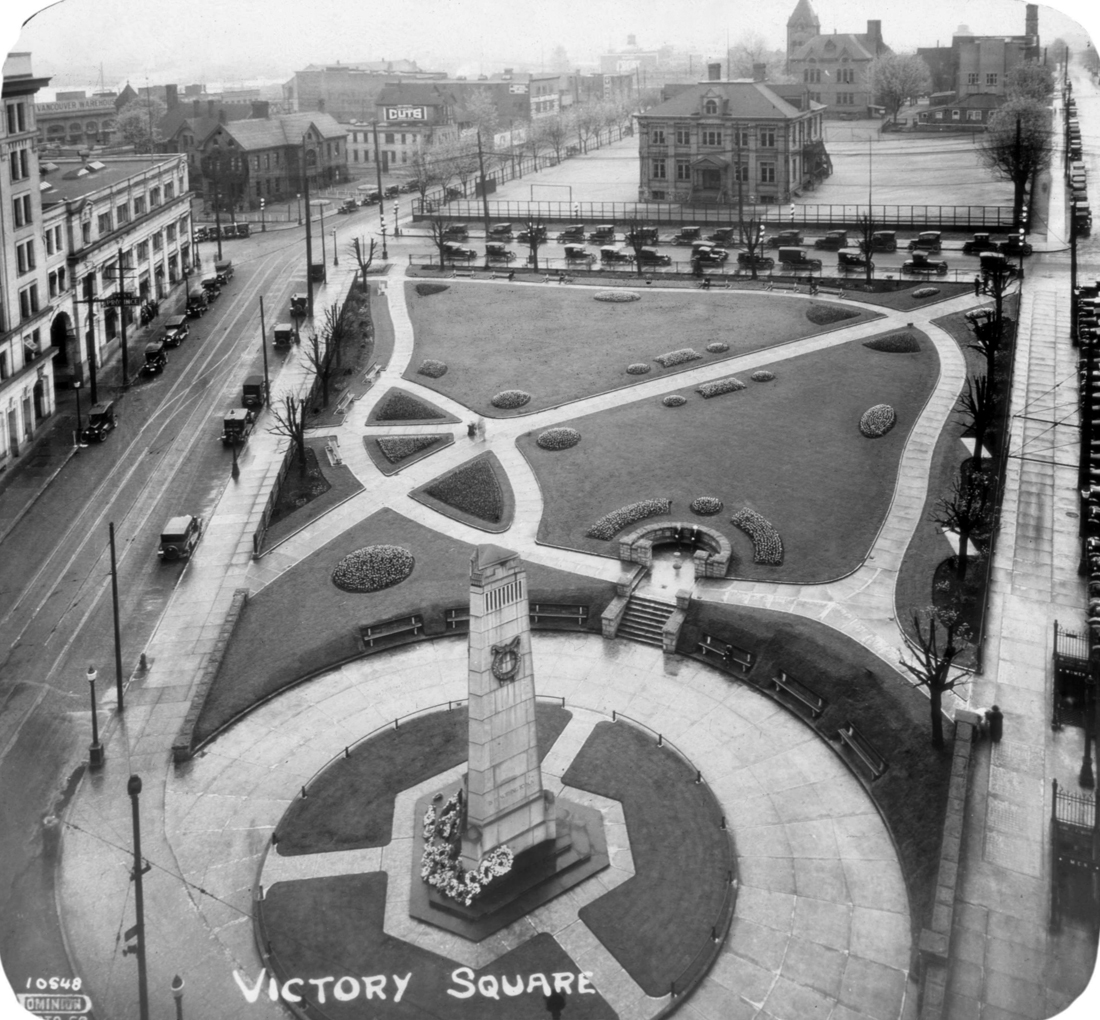The Early Years of the Vancouver Vocational Institute – THE SITE AND ITS HISTORY
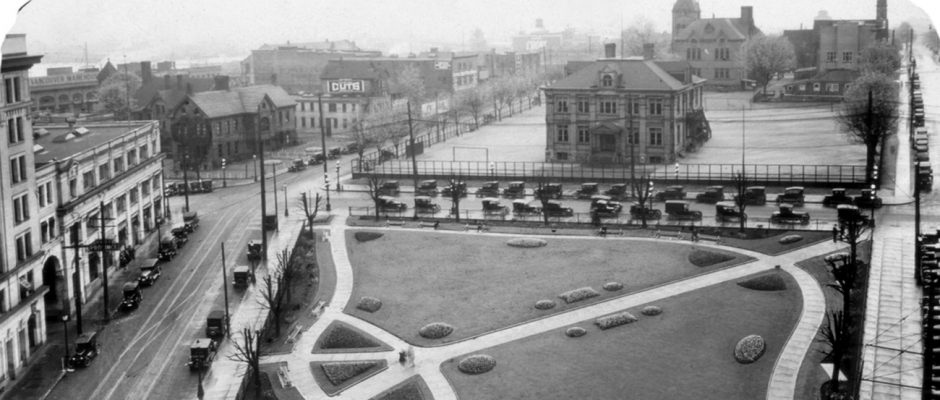
The following passages are taken from PART III of a history of the Vancouver Vocational Institute written by Hans W. Rerup, former Principal of the Vancouver Vocational Institute, and published in 1993. The photos are from the Vancouver School Board Photo Archives.
Summary: The location, surroundings, and legal history of the site (Block 37). Description and changing functions of the buildings erected on the site. Legal battles between the Vancouver School Board and the City of Vancouver over the ownership and use of the site.
_________________________________________________________________________________________________________
40 YEARS HISTORY
VANCOUVER VOCATIONAL INSTITUTE
1949 – 1989
Preface: The content of this work has been collected from many people and sources. The writing has taken a number of years with repeated interruptions for more important activities. Thanks go out to all those people who have in some way contributed to the final completion of this history. Much more could have been written about the functioning of the programs, the advisory committees, the committee organizations, and the financial problems. However, it is doubtful that such content would have been interesting from an historical perspective. May the reader at least with this attempt gain some insight into this former institution.Hans W. Rerup, February 1993
THE SITE AND ITS HISTORY
Vancouver in 1887: looking west from Jackson Avenue. From this vantage point, Block 37 is seven city blocks distant, at centre left. (Photo credit: City of Vancouver Archives)
The Vancouver Vocational Institute was located at 5 West Pender Street in the heart of the new and young city. The location had been the home of education and training for the citizens of Vancouver since 1880 well before the incorporation of the City of Vancouver. The location was one city block bounded by West Pender Street on the north, Cambie Street on the east, Dunsmuir Street on the south and Hamilton Street on the west side.
The legal description of the land was: Block 37 on District lot 541. Originally the city block was sub-divided into regular residential lots with the overall size of the city block being 260 feet by 465 feet. In 1949, the land was reduced, by seventeen feet along Cambie Street and ten feet along West Pender Street, in order to allow the City to widen the adjacent streets. At the time, it was planned to widen Cambie Street and making it a major arterial road southward out of the city.
As a condition of the College obtaining a development permit for the 1981-83 expansion and renovation, another ten feet of the property was demanded by the City of Vancouver for a road allowance along Dunsmuir Street. By then the new Georgia Viaduct was using Dunsmuir Street as a major traffic artery into the downtown city. The overall size of the remaining land in the city block in 1989 was 445 feet by 243 feet, or approximately 2.5 acres of land.
In 1891 the School Act reserved lots 1 to 15 and lots 32 to 36 inclusive for school purposes. This action provided a retroactive Crown grant for land the Vancouver School Board had been using for school purposes since 1880. Lots 1 to 10 were along West Pender Street and covered Block 37 back to the lane allowance to the south. Lots 11 to 15 were to the south of the lane and along Cambie Street. Lots 32 to 36 were the corresponding lots south of the lane along Hamilton Street.
The original crown grant of 1891 was a major stumbling block for the City of Vancouver in its prolonged battle from 1925 to 1935 with the Vancouver School Board for the rights to the property.
In 1892, Lots 16 to 23 were obtained from Mr. Donald A. Smith, who later became Lord Strathcona. In the same year Lots 24 to 31 were transferred from Mr. Richard B. Angus for school purposes. Thus, since 1892 the whole of City block 37 was assigned to educational purposes. These different origins, for the various parcels, created a legal confusion for the title of the site as a whole. Only in 1935, the City of Vancouver was able to combine all the lots into a single property with one title. At the same time the various allowances were also removed, even though this action required a special agreement with the British Columbia Telephone Company for the routing of its cables and conduits through the former lanes.
…..
The first building on the site was a wooden structure in the middle of the block. Its primary alignment was from east to west. It was called the Central School because it was situated midway between the East and West Schools in the Vancouver area, which at the time was not yet a city. The original wooden Central School was built in 1880 and was later expanded to hold three classrooms.
1890 The first class of Vancouver High School students and their teacher, Mr. Alexander Robinson, gather outside the 2-room wooden building that served as their school while Vancouver High School was under construction.
After the completion of the brick Central School, the original wooden building became the home of the first secondary school classes in Vancouver, These classes remained there until the Vancouver High School was completed in 1896. After 1896 the wooden building served various purposes, and in its later years it was the residence of the janitor for all the schools on the city block. In January of 1948 the janitor, Mr. J. Brown, received his formal notice to vacate this residence, the old wooden school building at 528 Hamilton Street. The building was demolished in March of 1948 to make room for the planned Vancouver Vocational Institute.
In 1889, a concrete and brick Central School was built north of the original wooden building along West Pender Street. This building housed elementary classes until its demolition in March of 1948 when it had to make room for the new Vancouver Vocational Institute. This “permanent’ two story structure was located in the middle of the city block facing West Pender Street. In the words of the city archivist Major Matthews: in 1896 the Central School was surrounded by “wood plank sidewalls, grass in the gutter, plenty of mud in the winter and hay in the summer”. An early picture of a class of students in 1898 shows the teacher, Miss Margaret E. Spillman, with a class of forty students in front of this building supporting the archivist’s statement.
1893 Vancouver High School shortly before it opened in the autumn of 1893. At centre right, the two-room wooden building that served as a temporary home for the high school. At far right, Central School, the first stone and brick school building constructed in Vancouver. It opened in 1890. (Photo credit: City of Vancouver Archives)
In the month of August 1893, a third structure neared completion on city block 37. The new building was the Vancouver High School. It was situated at the corner of Cambie and Dunsmuir Streets on the south-east corner of the city block. The high school was a combination brick and concrete two-storey building. It served as a high school from1893 to 1925. The Vancouver High School was often referred to as the Second Unit Central School and also as the Upper Central School because it was the second “permanent” school on the site and was located at the higher elevation of the city block on the land provided by Lord Strathcona.
…..
In 1925, the Vancouver High School building became the Vancouver School of Art operated by the Vancouver School Board. Its first principal was the well known artist Charles H. Scott. His son J. C. J. Scott was, later in the nineteen seventies and eighties, a member and then the chairman of the College Board of the Vancouver Community College.
A painting by Charles H. Scott hung for many years at the entrance to the Vancouver Vocational Institute’s administrative offices. It depicted the view along Hamilton Street in 1934 looking south to a line-up of people at the First Baptist Church, where the Queen Elizabeth Playhouse Theatre was to be built later. Teachers at the Vancouver School of Art left their mark at the Vancouver Vocational Institute. The renowned painter J. Shadbolt’s water colour of the demolition in 1945 of the Central School was displayed for years at the switchboard and reception of the Vancouver Vocational Institute. For many years the pastel drawings by O.N. Fisher of the 1963 major construction and expansion of the Vancouver Vocational Institute decorated the main corridor at the administration offices and later in the mall in the Vancouver Vocational Institute.
The Vancouver High School, later the Vancouver School of Art building, remained standing until December 1954 when it was demolished. In 1952 the Vancouver School of Art had moved into the vacant Vancouver School Board office building. This building was on the south-west corner of the same city block, but more about this later. From 1954 to 1963, the south-east corner of the block and former site of the Vancouver High School was a nice green lawn which students of the Vancouver Vocational Institute and the Vancouver School of Art enjoyed on a sunny day.
1952 Charles Hepburn Scott, the Director of the Vancouver School of Art (1926 – 1952 ) and a guest of honour at the opening ceremony for the new Vancouver School of Art building (formerly the location of the administrative offices of the Vancouver School Board.)
1952 The entrance to the new Vancouver School of Art building.
The next structure to be added on the city block in 1910 was a three-storey office building. It was added on the south-west corner, of the block. This building served as the administrative offices of the Vancouver School Board until 1952. By then the Vancouver School Board had moved its offices to better and larger quarters at 1595 West 10th Avenue. The old office building on block 37 became the home of the Vancouver School of Art until 1964 when a major expansion of the Vancouver Vocational Institute also included new and improved quarters for the Vancouver School of Art as an integrated part of the Vancouver Vocational Institute building complex.
1964 One of the teaching areas of the Vancouver School of Art following its relocation to the new addition of the Vancouver Vocational Institute.
Following the evacuation of the Vancouver School Board office building and the expansion of the Vancouver Vocational Institute buildings in the 1963/64 construction, the Commercial and Secretarial Programs made their home in the old office building until its demolition in 1980.
1928 In the foreground, Victory Square. Block 37 is visible in the background. Central School is the nearest building. Directly behind it is the original Vancouver High School building, which, in 1936, became the new home of the Vancouver School of Art. At far right is the building which housed the administrative offices of the Vancouver School Board from 1910 – 1952. (Photo credit: City of Vancouver Archives)
Victory Square was located across the street to the north from the location of the Vancouver Vocational Institute. From the beginning of urbanization this square had been the centre of the City of Vancouver. After the great fire of Vancouver, the survey and street grids system began at the corner of Hamilton and Hastings Street. The Victory Square block housed in the early years the first Vancouver courthouse. The Lumberman’s Arch, a famous landmark first built for the visit of Royalty and later relocated to Stanley Park, was originally located across West Pender Street at the Hamilton Street intersection at the corner of the school ground of Central School. Once, the major Vancouver newspapers such as the Vancouver Sun, the Province, the Vancouver Herald and the Vancouver Daily were located on or within a block of Victory Square.
The YMCA was located on the north-east corner of the Cambie and Dunsmuir Street intersection. The first Baptist Church with its tall steeple was located on the south-east corner of the Hamilton and Dunsmuir Street intersection.
A description of the site of the Vancouver Vocational Institute would be incomplete without the inclusion of a few notes about the struggle between the City of Vancouver and Vancouver School Board of Trustees for the site. In 1925 the City requested that the Vancouver School Board turn over to it the Central School site property for a proposed Civic Centre. The Vancouver School Board was prepared to do this upon receipt of a compensation of $837,000, $600,000 for the land and $237,000 for the four buildings standing on the property. The City of Vancouver was of the opinion that it should not have to pay for the property since it belonged to the same ratepayers. At the same time the City Hall was located in very crowded conditions at 16 East Hastings Street and was in need of urgent relief.
A civic committee was formed by the City of Vancouver. This committee pursued the issue of the rights to the property for over ten years. A local newspaper, the Morning Star, was deeply critical of the Vancouver School Board of Trustees, arguing that the property was owned by the same ratepayers which funded both the City government and the schools.
In 1927 in a surprise reminder to all, the Ministry of Education ruled that the land, which was a Crown grant, would revert to the Crown if it was no longer used for school purposes. Thus, the attempt of acquisition of the property by the City of Vancouver would cause the loss of the property to both parties.
During the following eight years, negotiations continued regarding the amount of compensation the Vancouver School Board should get. At some point, only the Central School site, the most northern portion of the city block, was considered for the new City Hall.
The plans for the new City Hall were at some other time increased to become a general Civic Centre for all public services in the city. The Civic Centre was intended to include four city blocks: Block 37, the school site; Block 38 east of Cambie Street, later partially used for city parking; Block 47 used for the Queen Elizabeth Theatre; and Block, Larwil Park, which after 1946 was used for the bus depot.
The fight between city and school board became so extreme that in 1935, the City proposed an amendment to the City Charter in order to overcome the impasse. Finally in its frustration, the City of Vancouver went across the Connaught (Cambie) Bridge and built a new City Hall in a cow pasture at Cambie and 12th Street.
However, this did not stop the idea of a Civic Centre, which was intended to serve many public functions in Vancouver. In 1945 after the hiatus of the war years, the Civic Centre Committee promoted the idea again.
In 1946, the ratepayers of the City of Vancouver approved the planning of the new “Civic Centre” on the school grounds of the old Central School. However, the ratepayers reversed themselves in a December 1947 plebicite and voted overwhelmingly against the 3.5 million needed. So, the Civic Centre could have stood where Vancouver Vocational Institute was built in 1949.


